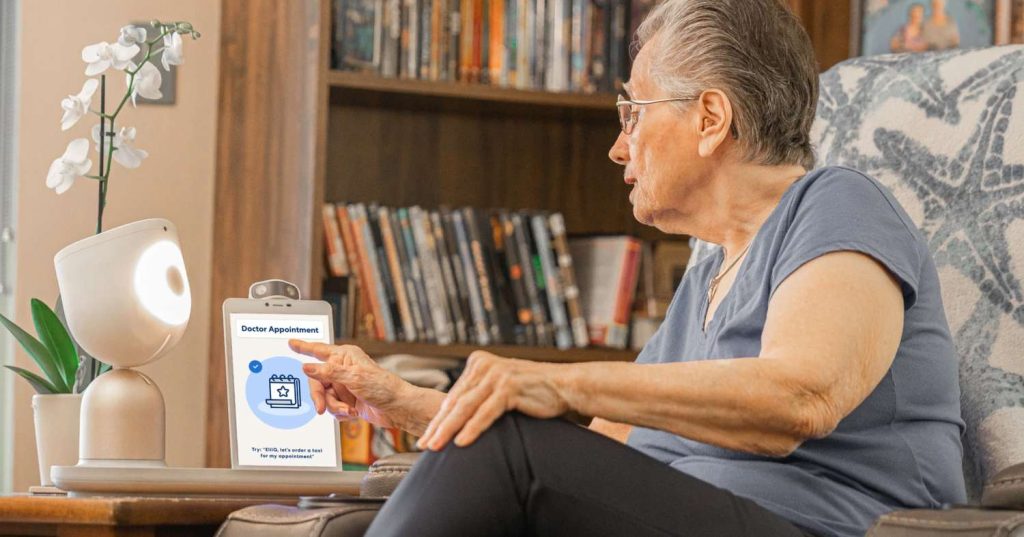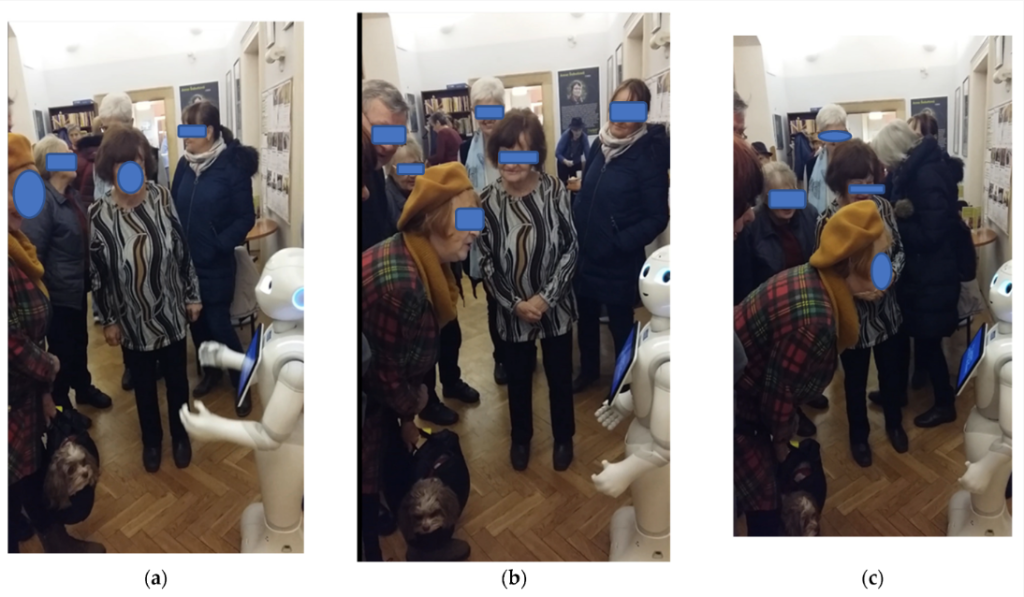In today’s society, we are experiencing a global shift in the population distribution towards old age due to higher life expectancies. It is expected that the number of humans aged 80 years or older will rise in threefold between 2020 and 2050, reaching a total of 426 million. Due to biological reasons, older adults are more prone to experience cognitive and physical difficulties or diseases, and these issues often correlate with loneliness. Therefore, the (health)care system needs to be prepared to ensure a life of high quality for this group through long-term care (LTC).
The United Nations set a goal with the “UN Decade of Healthy Ageing” stating that countries should meet the healthcare needs of current and future older populations between 2021-2030. However, the LTC system is experiencing substantial shortages of front-line staff, leading to high work pressure and insufficient time for adequate caretaking. An international survey even mentions that 3 in 5 believe their healthcare system is outstretched. It is not only healthcare staff at risk of burnout; family caregivers are in similar situations. A report by the American Association of Retired People and the National Alliance for Caregiving mentions that 36% of family caregivers currently describe their situation as “highly stressful”.
Artificial Intelligence (AI) could revolutionize todays’ elderly healthcare system by expanding the reach of care delivery, its efficiency, and, as a consequence, reducing the caregiver burden. These technologies have the potential to act as complementary support to caregivers and could help out in situations where there is too little supply of care. AI could also facilitate the development of data systems and analysis for seniors which are in need of LTC. However, this research field is controversial and still developmental. Therefore, in this article, we will discuss the benefits and arguments against controversies of these technologies to show how AI can elevate the quality of elderly care, thereby, letting seniors have a happy and healthy life.
Monitoring the elderly’s health and safety
First, AI presents the opportunity to help monitor the elderly that require care for their safety. Machine Learning, a branch of AI, can learn patterns from historical data regarding specific types of behaviour or lifestyles, and recognize when an incident does not match this pattern. Examples of tasks of monitoring tools are to monitor medication intake, detect dangerous falls, and monitor the locations of individuals in real-time. Traditionally, such tasks are performed by human caregivers. However, as it is not possible for many caregivers to be physically present at all times for their elderly loved one, monitoring tools provide the perfect tool to lessen the pressure on caregivers and healthcare staff.
In a scientific study, it was found that an AI monitoring tool presents the opportunity for the elderly and caregivers to bring them comfort and peace since they will know that any sign of detected unusual behaviour will alert the caregivers, who can intervene if necessary. Furthermore, this technology will enable seniors that can not live independently anymore to still live in their own homes, which they often prefer over moving to an institutional care facility.
Usage of Social Robots to boost mental health and loneliness issues
Another research field within AI, so-called Social Robotics, investigates how robots can accomplish social intelligence, and be beneficially employed in real-life. A research project funded by the EU and Japanese government found that seniors in care homes that interacted with a social robot for up to 18 hours in two weeks discovered a significant positive impact on their mental health. An example of an already commercially-available social robot is the “ElliQ” robot. This robot engages seniors in conversation, motivates them to maintain healthy habits, and makes jokes and suggestions to their human partners.
It should not be feared that robots like ElliQ would replace human caregivers completely. These social robots are meant to assist human workers, taking some burden from the care system. Besides their social functions, care robots could also perform monitoring tasks such as the ones described previously, considering they are intended to interact with older humans in an intuitive way. Combining the two factors allows elders to live independently for as long as possible.

AI could predict (mental) health issues of older adults
Besides the aforementioned methods, predicting methods also show a lot of potential in optimization of the elderly care. During the corona pandemic, a group of researchers studied the possibility of AI predicting loneliness in residents of senior housing. By applying AI methods to 80 interviews, such as Natural Language Processing, their research method could result in 94% precision in qualitative loneliness (self-assessment scores) and 76% precision in quantitative loneliness (transcribed tools).
Moreover, Deep Learning algorithms have also shown to be promising in predicting age-related diseases and other (health) issues. Based on medical data, the AI method is shown to be rather good at identifying the applicable patterns within complex and non-linear clinical data.
Therefore, AI also proved to have the potential to predict mental and physical problems within older age groups. It can also lead to more personal contact as the older patients can be diagnosed preemptively.
Dealing with ethical issues of using AI for elderly
As the population keeps ageing, the work pressure keeps increasing in healthcare. The mental and physical state of healthcare professionals is as, maybe not more important as those of the elderly. After all, society wants human attention to stay a priority, but what if these providers are overworked and burned out? AI methods, such as automatic monitoring and predicting seem to be the ideal solution. However, the great potential of using AI in elderly care also carries some risks that must be addressed before AI can be responsibly used in the sector.
The replacement of human care
One of these issues is that AI in elderly care may come with the risk that AI will take over an inordinate amount of tasks. The social aspect of care is crucial and very central to the necessity of human connection. Because of this, it should be noted that AI tools are there to augment healthcare workers, not replace them. As these previous arguments prove, the fear of replacement by AI is somewhere far from the ideal scenario.
Several measures can prevent AI tools, especially social robots, from making seniors even more distanced from human contact. One example is to purposely design robots to not look and act like humans to prevent deception, like ElliQ. Moreover, social robots can also be used to facilitate contact with human loved ones by sending reminders to text, call or make plans with family and friends.
Data privacy and “digital ageism”
Another issue that needs to be addressed is that many of the aforementioned tools use the personal data of senior citizens. The type of data collected is often sensitive, e.g. personal stories told to social robots or medical data. It is essential to create knowledge and policies on which kinds of privacy are necessary to improve health outcomes. The same notion can be prescribed for health professionals, as they want to bolster care management. All this information can help AI professionals to focus on the relevant aspects which can support caregivers and professionals in tailored care.
Another pitfall that should be considered is that seniors are left out of designing the digital technologies and employment that are supposed to support them. This form of discrimination is also called “digital ageism”. Fortunately, certain measures can be taken to increase responsibility. Foremost, as end-users of AI products, the elderly should be actively involved in different stages within the design cycle, to gather more knowledge on their wishes and preferences on issues. Examples are how they wish to interact with the technology or what information can be collected or shared with family members, healthcare professionals or commercial organizations.

Conclusion
Overall, the elderly care sector is facing a big challenge in how high-quality care can be delivered to a growing group of older adults. This means that the sector requires newer and smarter solutions and innovations to keep up with the rising pressure due to global population ageing. We have considered several benefits of the employment of AI in elderly care. AI shows significant potential as it can collaborate with humans in several care tasks such as monitoring, providing social support, and even predicting potential health or social issues amongst the elderly. A certain degree of cautiousness and proper preparation is required before these AI technologies can be implemented on a big scale in society. Specifically regarding privacy issues, digital ageism and the human aspect of care.
Solutions to these issues exist and have been discussed in this article. Transparency and governmental regulations are essential to ensure that these algorithms contribute to the (mental) health and retention of independence amongst the older population. Only this way, AI in elderly care could have a seriously positive impact on achieving the UN goals of healthy ageing.



